 Tweet
Follow @climateandyou
Tweet
Follow @climateandyou
The number 1 thing you can do about climate change right now is get vocal about it – talk to friends and colleagues, contact your member of parliament, advocate for renewable energy.
Previous articles
Meaningless march or massive momentum?
Wind and solar are competing on a tilted playing field – tilted against them
We have everything to gain by acting now on climate change, even if we turn out to be wrong about it
Ten ways acting on climate change can improve your sex life
How the Coalition is ruining your sex life
Fact check: “coal is cheaper by a mile”
The following posts are my own commentary.
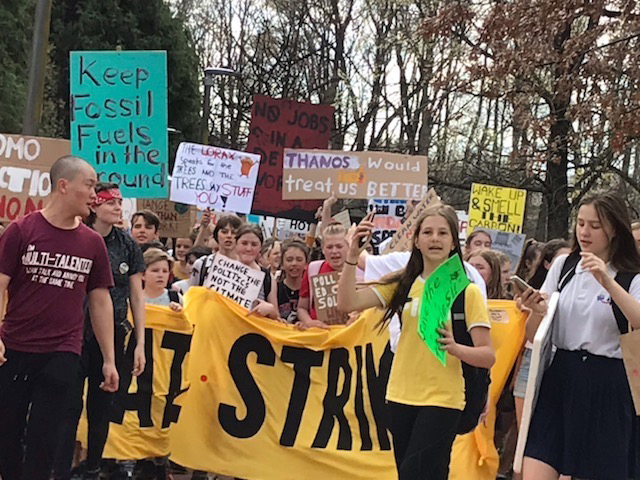
Thousands of Canberra students led the Global Climate Strike march around the city centre on Friday 20 September (photo: Marilyn Chapple)
On Friday 20 September my teenage daughter and I joined hundreds of thousands of school and uni students, workers and union members, Aboriginal people and Torres Strait and Pacific Islanders, parents and grandparents, teachers, public servants, retailers, tradespeople, business owners, health professionals and everyone in between at one of more than 100 protests around Australia as part of the Global Climate Strike. There were millions more people at thousands of cities and towns around the world.
It was a thrilling, energised day filled with rousing speeches, original songs, heartfelt appeals, clear demands, traffic-blocking marches, passionate chants, pithy and witty placards, wacky costumes, coordinated stunts, and community spirit in spades. There was no violence, no arrests, protesters even took home their own garbage. And it was all organised by our children, the generation who have no legal voting rights and thus little direct political power over the biggest threat to their future.
Students faced down absurd and patronising comments by laggard politicians and vested-interest media that they should be in school getting an education and saving their protest for school holidays or a weekend so it would be less disruptive. As many hand-painted signs pointed out, what's the point of getting an education if our so-called leaders won't listen to educated scientists and concerned professionals? And surely the whole point of a strike is to be absent and disrupt!
As the dust of our global gatherings settles and our endorphins and adrenalin dissipate, many participants might be wondering if the biggest global protest in history will make any difference, especially in high-emitting countries with recalcitrant governments like Australia. Those of us who marched in futile protest about going to war over spurious ‘weapons of mass destruction’ or voted against the current government in the last election probably have justifiable doubts. Under the leadership of a Prime Minister too dug into inadequate targets to even turn up to UN climate meetings this week in New York despite being just down the road in Washington, federal government climate policy in Australia is unlikely to change overnight. However, I believe this protest is different.
This coordinated action was led by articulate, passionate children using social networking tools that did not exist even a decade ago. They have united an incredible diversity of environmental, social, cultural, union, professional, religious, political, business, health, farming and humanitarian groups across more than 150 countries under the single banner of Global Climate Strike. More than 2800 Australian companies led by Future Super pledged to conduct ‘not business as usual’, many of them forgoing a day of revenue to allow employees to attend the strike. This broad coalition of strange bedfellows signals widespread dissatisfaction with status quo and applies pressure on all aspects of government and corporate business from all directions of society and economy. Each of the three global strikes over the past year has been bigger than the previous – this is a movement that is gathering momentum and expanding in scale, not fizzling out as objectors surely hoped.
Meaningful social change is messy, complex, contextual and contested, slow and unpredictable. It is not won by simple linear cause-and-effect actions but by the gradual chipping away of resistance, the building of new solutions and pathways, the subtle shifting of power and alliances until the critical mass of all those efforts combined forces a tipping point that seemingly overnight becomes an irresistible landslide into a new paradigm.
We are at a critical juncture. We now have a confluence of massive global public pressure, viable and affordable technology and practical natural solutions with multiple co-benefits. The global financial crisis and environmental and humanitarian disasters all over the planet are providing tangible evidence of the limitations of capitalism's central tenet of endless economic growth powered by fossil fuels and deforestation. Critically, the timeframes have shortened to scales comprehensible by humans.
50 years ago when global warming was first recognised as a problem for humanity, it was a vague and distant threat with plenty of time to rectify it. Even five years ago scientists were largely talking in terms of consequences in 2100 and beyond. But, what feels like suddenly, it has become a single decade. By 2030, the IPCC tells us, if we have not made substantial change in our energy, agriculture, land use, pollution and consumption patterns, we will have committed ourselves to a climatic future that pales in comparison to the most horrific post-apocalyptic movies that Hollywood has devised – without the heroic happy ending. Ten years is a period of time that even election-cycle-focused politicians can start to relate to. It's fewer years than the ages of the youth protest organisers. It's closer than the high school graduation date of many of the children who took to the streets. Climate change looms in my children's future the way tertiary studies did in my own teens, like a huge storm on the horizon that we're hurtling towards along a highway with no off-ramp.
Opponents will probably opine that the global climate strike was a stupid, naïve, empty gesture, ‘virtue signalling’ at best, a costly disruption at worst. But what those commentators don't see is the growth of ‘power within’, ‘power with’ and ‘power to’ that the massive gatherings represent. This is best illustrated by a tiny 10-year-old girl in the Canberra march. Carrying a hand-painted, politically satirical cardboard sign taller than she was, she raised her small voice, calling ‘what do we want?’, ‘when do we want it?’ while the crowd around her enthusiastically responded ‘climate action’, ‘now’. That child will carry away not just the giant sign, but also a sense of personal empowerment, of community, of agency. She will go back to school next week and share the experience of her practical lesson in democracy with her teachers and classmates and maybe inspire them to take positive action themselves. My own daughter came away saying that ‘next time’, she will make her own sign.
I agree with Swedish activist Greta Thunberg that more than hope, we need action. But she's wrong about nobody doing anything. There are millions of people in thousands of businesses, organisations and communities around the world who are chipping and building and shifting to push us onto a better pathway. Certainly, we need far more action, but the scale of the strike has shown that there are rapidly increasing numbers of people who, in the words of the Lorax, care ‘a whole awful lot’, and I take optimism from that.
PS. Here's a little shout-out to all the public servants who care deeply but could not attend for fear of losing their jobs – and the ones who came anyway!
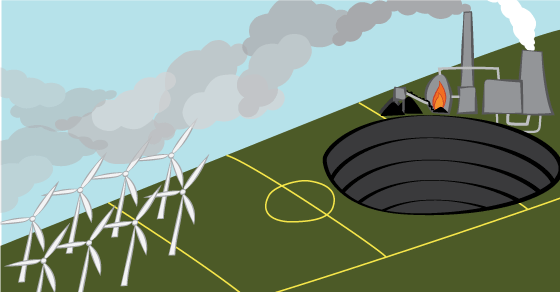
Brendan Pearson, chief executive of the Minerals Council of Australia (MCA), regularly contributes opinion articles in support of fossil fuels – it’s his job to spruik the merits of black rock. This is a response to his piece for The Australian Financial Review on 14 March 2017.
What is ideology and why does the MCA want us to remove it from debate about energy? Ideology is ‘ the body of doctrine … of a social movement, institution, class or large group … with reference to some political and cultural plan’ (Macquarie dictionary). The particular ideology the MCA would like us to ignore is the internationally agreed need to cease emitting climate-change-causing carbon dioxide to achieve the global ambition of maintaining a habitable planet (UNFCCC 2015), a topic that the MCA makes no mention of. But the fossil fuel industry has its own ideology – wealth creation and protection of the ability to continue to create wealth regardless of the impacts on the planet (Cook 2016). Hence, the MCA would like us to debate in purely economic terms so that we can focus on aspects such as subsidies and profits rather than be distracted by bushfires, human health, collapsing coral reef ecologies and the like.
The rules of the Clean Energy Finance Corporation do indeed prohibit investment in carbon capture and storage and nuclear technology, but not the use of fossil fuels, so long as any new fossil fuel technology can achieve ‘an emissions intensity of less than 50% of the existing generation system’ (CEFC 2015). So ‘super-efficient’ ‘clean coal’ could potentially qualify except that even the World Coal Association acknowledges that ‘high efficiency, low emission (HELE) coal-fired power plants’ can only ‘reduce greenhouse gas emissions … by around 20%’ (World Coal Association 2017) which still doesn’t get even close to solar PV or wind (World Nuclear Association 2011). The Clean Energy Finance Corporation could hardly be called ‘clean’ if it was only aiming for a 20% reduction in emissions.
Let’s look at nuclear. Pearson mentions Japan’s pragmatism, but not Fukushima’s fallout. He’d probably rather we looked at Europe’s record, but a third of France’s nuclear fleet is offline because of safety concerns (Buchsbaum 2016). Perhaps the risk of a nuclear disaster on the scale of Chernobyl is low but Australian society has decided that the potential consequences of it are unacceptable (Bird et al. 2014). Then there’s the eternal question of what to do with radioactive waste that lasts for centuries, and at double the new-build cost of renewables, new nuclear plants don’t even stack up economically (Vorrath & Parkinson 2015).
The article correctly quotes the International Energy Agency’s estimate that ‘over the last five years, close to $US410 billion in support was paid to renewables-based power plants’ (World Energy Outlook 2015) but fails to place that figure in the context of the subsidies paid to the fossil fuel industry. The same agency reports that in 2014 alone the value of fossil fuel subsidies was almost $500 billion (World Energy Outlook 2016). Over the same five-year period (2011–2015), the fossil fuel industry received approximately $US2500 billion – more than five times the amount that renewables received (International Energy Agency 2016) and equal to the combined GDP of the world’s poorest 130 countries (World Bank 2017). Sorry, did I hear you say ‘tilted playing field’? This selection of data without providing comparison or context is called ‘cherry picking’.
The article calls for the Finkel review to recommend technology-neutral and ideology-free energy policy, yet makes no mention of the potential economic tools that the current government has dismissed from consideration – a price on carbon, an emissions intensity scheme (Bickers 2016), and the setting of emissions reduction targets consistent with meeting the global agreement (Hamilton & Karoly 2016). Pearson also wants us to acknowledge the ‘distortions’ of renewable subsidies, but not the distortions of fossil fuel subsidises or any consideration of the externalities of the environmental damage, air pollution and climate change caused by the fossil fuel industry that they currently don’t have to pay a cent for (IRENA 2016).
As for living standards, the world’s ‘greenest’ economies, Sweden, Norway, Denmark, Switzerland (GGEI 2016), also have the highest standard of living (OECD 2017). Renewables themselves are not to blame for our current energy ‘crisis’ – ‘the inability of Australian governments to define and articulate a coherent narrative around a low-carbon energy future has constrained Australia’s sustainable energy transition and led to contradictory and disjointed outcomes’ (Warren, Christoff & Green 2016).
Yes, Mr Pearson, the playing field is tilted … with the vast weight of the fossil fuel industry and coal-driven ideology weighing down this country like a millstone.

If we don't act strongly now to limit climate change and adapt to it's impacts, there are all kinds of dire scenarios being projected.1 But it's not all doom and gloom. If we have the will and the courage to take strong action now, we can avert much of the worst consequences.2 Not only that, if we seize the day, we have much to gain in economic and lifestyle opportunities. So what have we got to lose?
Let's say we do shut down coal-fired power and other greenhouse gas emitting activities and invest in renewable energy and other clean technologies. That's going to cost something: the Greens propose $250m to transition coal workers and $500m for a new energy authority to drive construction; the Labor Party proposes $300m to support the transition of emissions-intensive industries and $206.6m for concentrated solar thermal; the Liberal Party propose $2.55b to incentivise business to reduce their emissions (formerly known as "direct action") and $1b to encourage new technology (but with no intention to reduce coal mining or transition the coal-fired power industry) (compare policies).
There will be some loss of revenue from all that precious black rock that we leave in the ground, currently earning Australia some $16b ("industry value added") (declining over the past few years due to falling prices).3 But there are likely to be some savings too, such as the nearly $6.5b the Coalition intend to keep paying to the mining industry in the form of a fuel tax credit (see the details).
We also need to reduce emissions from transport, agriculture, manufacturing and cities4 by improving energy efficiency, adopting new, clean technologies and investing in research and innovation. At the same time, there are a host of other activities that we need to be enacting to adapt to climate change that is already happening and will continue to happen even if we were to cut emissions to zero today, such as supporting the Great Barrier Reef (reasons for doing that), flood, fire and storm protection, coastal infrastructure protection, environmental conservation, sustaining agricultural production, public health support etc.
All of these activities represent both direct and indirect costs, and the economics of it all is mind-boggling to us non-accountants. But there's a lot more to it than just economics – there are also plenty of benefits and opportunities to be had if we just get past the obstacles and get on with it.
One of the most strident objections, including from our own Prime Minister, to Australia ceasing coal exports is that “the countries buying it would just buy it from somewhere else” and “it wouldn't reduce carbon emissions”5. Well, 195 countries agreed at the Paris climate conference (COP21) in December 2015 about the need to reduce emissions,6 which necessarily includes significant reduction in coal-burning. If all those “countries buying it” are to meet their COP21 commitments, they will be buying a whole lot less thermal coal (yes, even India and China),7 meaning that we won't be missing out by not selling ours. That's a sector of the economy that will become redundant whether we've proactively planned for it or not, so it's probably best that we do. If we act now, we can fill that gap with 28 000 jobs and growth in renewable energy industries8, international education (NSW's biggest services export is already worth $6.7b)9, tourism10 (increasing to about $17b in 2015) and other industries. If we wait, those gaps will be filled by other countries11 and we'll find ourselves left behind or even importing the technologies and skills.12
Coal is the leading source of air pollution, “responsible for 430 000 tonnes of coarse particle pollution in 2013–14, … 47% of the national total.” “Air pollution kills more Australians than car accidents”13, contributing to diseases including stroke, heart disease, lung cancer and asthma.14 A previous article discussed the effect of heat on human health. These impacts both shorten our lifespan and place an unnecessary burden on our healthcare system. Imagine if we stopped digging up and burning coal – surely the improvement in our health alone would be worth it.
Climate change is causing the most rapid rate of species extinction in history.15 It's affecting the productivity of farming land; causing changes to rainfall patterns that affect our domestic water supply; causing stronger storms, bushfires and floods.16 All of these things have a cost to us personally or to the broader economy (and thus eventually to us personally!). We need to protect and conserve our natural systems before they collapse completely. Nothing is more critical than our food chain and water supply. This requires ongoing research17 and large-scale, hands-on action with cooperation between all types of land managers including foresters, farmers, conservationists, urban planners, land owners, environmental scientists, policy developers and so on. Any improvements in scientific understanding, agricultural efficiency, sustainability of forest management etc build the resilience of our natural resources into the future.
So, let's say, for argument's sake, that we've done all this stuff to stop burning coal and shift to renewable energy and sustainable living, then, sometime down the track, all the world's scientists turn out to be wrong and climate change is not happening (not that there's actually any doubt!18). What's the worst that can come out of that? That we've improved our air quality and reduced the incidence of related diseases, improved our natural resource and biodiversity management to ensure the quality and security of our food chain and other environmental resources, preserved the Great Barrier Reef for the enjoyment (and tourism income) of future generations, diversified and strengthened our manufacturing and education sectors, freed ourselves from the tyranny of electricity retailers by putting solar panels on our roofs, grown our food more efficiently, protected our houses from the environment, improved our energy and water efficiency, ensured a cheap supply of non-polluting energy forever, developed better public transport and more liveable cities, improved our recycling and reduced waste and consumption, and so on and on? What would be so bad about all that? I fail to see to down side.
Really, what have we honestly got to lose by ditching coal?
Vote for a sustainable planet.
1 Intergovernmental Panel on Climate Change, 2014. Climate change 2014: Impacts, adaptation, and vulnerability, Working Group II contribution to the Fifth Assessment Report (AR5) of the IPCC. http://ipcc-wg2.gov/AR5/
2 UN Secretary-General, 2014. Worst effects of climate change can be averted, says Secretary-General in message for World Day to Combat Desertification, Press release SG/SM/15933-ENV/DEV/1436-OBV/1343, 11 June 2014, http://www.un.org/press/en/2014/sgsm15933.doc.htm
3 Australian Bureau of Statistics, 2016. 8415.0 - Mining Operations, Australia, 2014-15, Coal mining 2014–15. http://www.abs.gov.au/ausstats/abs@.nsf/Latestproducts/8415.0Main%20Features32014-15?opendocument&tabid=Summary&prodno=8415.0&issue=2014-15&num=&view=
4 Australian Government Department of the Environment, 2016. National inventory by economic sector 2014: Australia's national greenhouse accounts. https://www.environment.gov.au/system/files/resources/248188d2-376e-4831-af8b-e995fd585fb0/files/national-inventory-economic-sector-2014.pdf
5 Hopewell L, 2015. Australia has a new Chief Scientist, and he loves solar power and battery storage, Gizmodo, 27 October 2015. http://www.gizmodo.com.au/2015/10/australia-has-a-new-chief-scientist-and-he-loves-solar-power-and-battery-storage/
6 European Commission, 2016. Climate action: Paris Agreement. http://ec.europa.eu/clima/policies/international/negotiations/paris/index_en.htm
7 Vorrath S, 2014. Worse news for Australia as India taps solar, Beijing bans coal, RenewEconomy, 5 August 2014. http://reneweconomy.com.au/2014/worse-news-for-australia-as-india-taps-solar-beijing-bans-coal-66423
8 Climate Council of Australia, 2016. Renewable Energy Jobs: Future Growth in Australia. https://www.climatecouncil.org.au/renewablesreport
9 King A, 2016. Can education replace coal as NSW's biggest export? Financial Review, 16 May 2016. http://www.afr.com/news/economy/trade/can-education-replace-coal-as-nsws-biggest-export-20160516-gow5dk
10 Mulligan M, 2015. Tourism tipped to overtake coal as Australia's second-biggest export, The Sydney Morning Herald, 28 July 2015. http://www.smh.com.au/business/the-economy/tourism-tipped-to-overtake-coal-as-australias-secondbiggest-export-20150727-gildhl.html
11 The Climate Institute, 2006. Climate change: Risks and opportunities for Australian Business. http://www.climateinstitute.org.au/verve/_resources/cliamte_change_policy_uncertainties_creates_risk_for_australian_business_report_10_aug_07.pdf
12 Climate Council, 2015. The global renewable energy boom: how Australia is missing out. https://www.climatecouncil.org.au/globalrenewablesreport
13 Cox L & O'Brien N, 2015. Coal the biggest contributor to toxic air pollution: study, The Sydney Morning Herald, 2 April 2016. http://www.smh.com.au/federal-politics/political-news/coal-the-biggest-contributor-to-toxic-air-pollution-study-20150401-1mcwbt.html
14 World Health Organization, 2014. Ambient (outdoor) air quality and health, Fact sheet No 313, March 2014. http://www.who.int/mediacentre/factsheets/fs313/en/
15Meissner K & Alexander K, 2016. Mass extinctions and climate change: why the speed of rising greenhouse gases matters, The Conversation, 24 March 2016. http://theconversation.com/mass-extinctions-and-climate-change-why-the-speed-of-rising-greenhouse-gases-matters-56675
16 Climate Council, 2015. Feeding a hungry nation: climate change, food and farming in Australia. https://www.climatecouncil.org.au/foodsecurityreport2015
17 Climate Council, 2016. Flying blind: Navigating climate change without CSIRO. https://www.climatecouncil.org.au/csiro-report
18 Climate Council, 2014. Unpacking the IPCC Fifth Assessment Report: Impacts, adaptation, and vulnerability (Working Group II).https://www.climatecouncil.org.au/ipcc
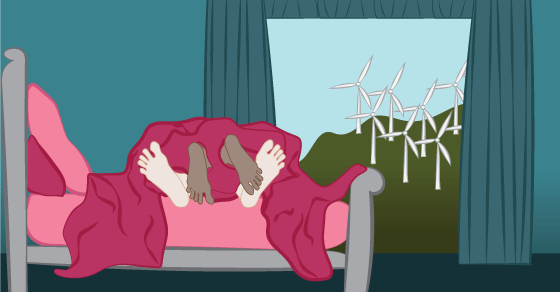
Let’s have a bit of fun when it comes to climate change action and see how it can help you get more one-on-one action…
A previous article discussed how climate change is ruining your sex life. Well, that’s great if you just want something to blame for your flagging performance, but how can we turn it around?
Here are ten ways that taking action to stop climate change can bring more passion into your bedroom.
So what are you waiting for? Take action! And demand that our politicians do so also!
1 Steffen W, 2014. The angry summer, Climate Council of Australia. https://www.climatecouncil.org.au/angry-summer
2 World Health Organization, 2014. Ambient (outdoor) air quality and health, Fact sheet No 313, March 2014. http://www.who.int/mediacentre/factsheets/fs313/en/
3 Chan A, 2011. 10 things that can lower your libido, The Huffington Post Australia, 7 November 2011. http://www.huffingtonpost.com.au/entry/lower-libido-10-things_n_947297.html?section=australia#gallery/189801/7
4 Better Health Channel, 2014. Libido. https://www.betterhealth.vic.gov.au/health/healthyliving/libido
5 Kmet RD, 2013. California State Science Fair 2013 project summary: altruism, cognitive function, and self-esteem, Project No S0412, University of Southern California. https://www.usc.edu/CSSF/History/2013/Projects/S0412.pdf
6 Fern A, 2014. 6 reasons why confidence is the most attractive quality a person can possess, Elite Daily, 12 June 2014. http://elitedaily.com/life/culture/confidence-attractive-quality-person-can-possess/626106/
7 Russell RC. Mosquito-borne arboviruses in Australia: the current scene and implications of climate change for human health. Int J Parasitol 1998; 28: 955-969. http://www.ncbi.nlm.nih.gov/pubmed/9673874?dopt=Abstract
8 Harley WF Jr, 2016. The love bank, Marriage Builders. http://www.marriagebuilders.com/graphic/mbi3200_love.html
9 Adams R, 2014. Study finds that ‘Happy wife, happy life’ is pretty dead on, The Huffington Post Australia, 23 September 2014. http://www.huffingtonpost.com.au/entry/happy-wife-happy-life_n_5843596.html?section=australia
10 United Nations, 2016. UNEP report: cost of adapting to climate change could hit $500B per year by 2050, 10 May 2016. http://www.un.org/sustainabledevelopment/blog/2016/05/unep-report-cost-of-adapting-to-climate-change-could-hit-500b-per-year-by-2050/
11 Wright M, 2013. Solar and air con – a marriage made in heaven, The Australian, 29 October 2013. http://www.theaustralian.com.au/business/business-spectator/solar-and-air-con--a-marriage-made-in-heaven/news-story/2c952ec38a21f648b5587cd610823087
12 Condomerie, 2015. History of the condom. https://condomerie.com/condomologie/condoomhistorie/geschiedenis_condoom
13 Miller-Wilson K, 2016. Hybrid vehicle emissions, Love To Know. http://greenliving.lovetoknow.com/Hybrid_Vehicle_Emissions
14 Political Australia, 2016. Compare the policies and positions of Labor, Liberal and The Greens. http://politicalaustralia.com.au/
15 The Greens, 2016. Australian Greens policy platform 2016. http://greens.org.au/policy-platform
16 Preston J, 2016. Malcolm’s dirty deals on marriage equality and climate change continue to haunt him, New Matilda, 19 March 2016. https://newmatilda.com/2016/03/19/expectation-management-malcolm-turnbulls-dirty-deals-coming-back-to-haunt-him/
17 Hathway S & Andrewartha J, 2016. Young people lose whoever wins this election, Green Left Weekly, 25 June 2016. https://www.greenleft.org.au/node/62000
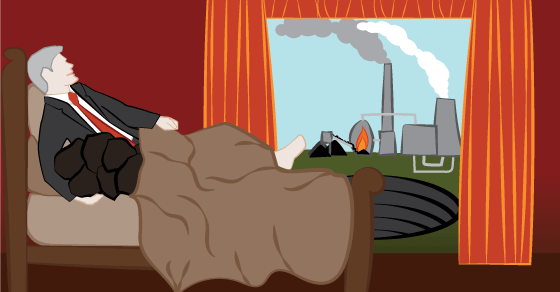
I bet you didn’t realise that climate change policies would be relevant in the bedroom…
Yes, it’s a bit of a cheap shot to get you here, but with the federal election merely a week away, there are no holds barred. So, am I pulling your… ahem… leg or is there some meat on this bone?
There was a bit of hoo ha in the news in November last year (2015) about a National Bureau of Economic Research (NBER) working paper titled Maybe next month? Temperature shocks, climate change, and dynamic adjustments in birth rates.1 The paper is a pretty dry analysis of the relationship between “hot days” and birth rates over the past 80 years in the US and the economic implications of future projections, but essentially what they found is that birth rates drop significantly 8 to 10 months after the daily temperature gets over a mere 26.7°C.
I’m not afraid of a bit of data analysis so I looked at ABS monthly birth rates data for New South Wales 2004–14,2 projected the monthly averages backwards by 9 months to the act of conception and compared this with BOM monthly mean maximum temperature data for Sydney.3 This is not a rigorous academic peer-reviewed analysis, and we’re using birth rates as a proxy for sex and fertility, but there is a correlation – January is one of the most successful months for making babies (we can probably attribute that largely to the party season) but then fewer babies are conceived in February and March (when temperatures average over 26°C) than at any other time of the year.
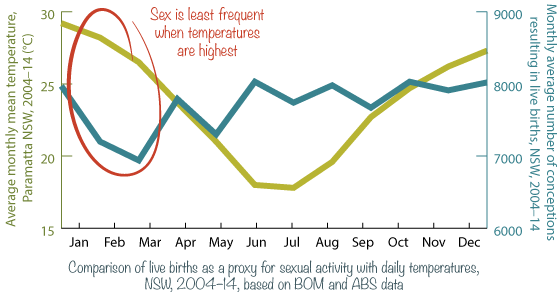
Things cool off in the bedroom when it’s hot outside.
Why? Is there more to it than simply it’s cosier to get between the sheets when it’s cold outside? There are some data that show that fertility in men is adversely affected by excess heat, causing alterations to sperm, thus lowering the likelihood of successful conception.4 Fewer babies means fewer young people paying taxes for governments to provide support services for an aging population, a decline in economic productivity and whatever other economic fallout comes from a shrinking population. 5
Beyond that, there’s a fair bit of reading between the sheets – I mean – lines and not a lot of actual evidence directly linking lack of desire to extreme heat. But you know yourself that when it’s stinking hot outside, you barely want to move, let alone hook up. Hot weather is great for getting your gear off, especially in Miami, according to condom manufacturer Trojan,6 but only up to the point where you start to dehydrate, get sunburnt, or start feeling the effects of heat stress and potentially fatal heatstroke7 – if you’re feeling that awful, you’re probably not really up for sex.
Heat stress and heat stroke are serious conditions. "It's not that well known, but heat stress kills more Australians than all of the other natural disasters put together,” said Dr Richard Kidd, chair of Australia Medical Association of Queensland Council of General Practice.8 More than 400 people died in Melbourne and Adelaide from the 2009 heatwave in southeast Australia.9 Climate change is bringing increasing temperatures and more very hot days and heatwaves, so this silent but deadly killer is set to increase.10 Without substantial action to tackle climate change and cope with a more extreme climate, heatwaves could cause hundreds of additional deaths annually in Australia by 2050, especially amongst the elderly or children.11 This will have impacts for our health system which the Coalition has been defunding since it took office in 2013.12 It’s interesting that the media rarely reports on this, seeming to prefer an isolated dramatic death by falling tree or sweeping flood water or shark attack.
Climate change is also causing more extreme events – bushfires, floods, storms, cyclones and droughts. 13 Extreme events cause stress – worrying about them approaching or dealing with the aftermath – which lowers libido,14,15 and increases mental health issues which, if not addressed, can lead to domestic violence. The Black Saturday bushfires in 2009 are not to be trivialised in any way. 173 people died, hundreds were injured, 2000 homes were destroyed and 7000 people were forced to relocate. You probably know someone who was affected. Communities were devastated and, at a personal level, men’s suffering after such massive trauma manifested itself within relationships as violence against women and children, accompanied by increased alcohol and drug use.16 If you thought climate change was something you could dismiss as fanaticism by tree-hugging, soy-decaf-chai-latte-sipping hippies, perhaps those figures might sober you up.
The Coalition’s refusal to get out of bed with the coal industry means that you’ll see less and less action in yours. If you want to keep the heat in your sex life, we need to keep it cool outside. This election, vote for candidates with strong climate change policies.
To deliberately misquote Robin Williams’ character in Good morning, Vietnam, "It's gonna be hot! That's bad if you're in the jungle, and it ain't no good if you're with a lady."17
1 National Bureau of Economic Research, 2015. Maybe next month? Temperature shocks, climate change, and dynamic adjustments in birth rates, NBER Working Paper No. 21681, issued in October 2015. http://www.nber.org/papers/w21681
2 Australian Bureau of Statistics, 2015. 3301.0 – Births, Australia, 2014, Table 7: Births, year and month of occurrence, States and territories – 2004 to 2014. http://www.abs.gov.au/AUSSTATS/abs@.nsf/DetailsPage/3301.02014?OpenDocument
3 Bureau of Meteorology, 2015. Monthly mean maximum temperature, Paramatta North (Masons Drive), 2004–2014. http://www.bom.gov.au/jsp/ncc/cdio/weatherData/av?p_nccObsCode=36&p_display_type=dataFile&p_startYear=&p_c=&p_stn_num=066062
Paramatta North was chosen because it is the closest weather station to Ermington which is the population centre of Sydney according to McCrindle Research’s Social Analysis report “The heart of Australia: analysis of our population centre”, 2012, http://mccrindle.com.au/SocialAnalysis/2012/The-Heart-of-Australia_Analysis-of-our-Population-Centre_McCrindle-Research.pdf
4 Lucio AC et al, 2016. Selected sperm traits are simultaneously altered after scrotal heat stress and play specific roles in in vitro fertilization and embryonic development, Theriogenology. 2016 Mar 19. pii: S0093-691X(16)00132-1. doi: 10.1016/j.theriogenology.2016.03.015 http://www.ncbi.nlm.nih.gov/pubmed/27087533
5 National Bureau of Economic Research, 2015. Maybe next month? Temperature shocks, climate change, and dynamic adjustments in birth rates, NBER Working Paper No. 21681, issued in October 2015. http://www.nber.org/papers/w21681
6 Princeton NJ, 2010. Cloudy With a Chance of Sex? New Trojan® Survey Links Wet Weather with Higher Sexual Frequency and Satisfaction, PR Newswire, 30 June 2010. http://www.prnewswire.com/news-releases/cloudy-with-a-chance-of-sex-new-trojan-survey-links-wet-weather-with-higher-sexual-frequency-and-satisfaction-97507709.html
7 Better Health Channel, 2016. Heat stress – preventing heatstroke. https://www.betterhealth.vic.gov.au/health/healthyliving/heat-stress-preventing-heatstroke
8 Philpott M and Kesteven S, 2016. Heat stress deaths rise following Australia Day, warns Queensland doctor, ABC News, 25 January 2016. http://www.abc.net.au/news/2016-01-25/heat-stress-deaths-rise-following-australia-day/7113030
9 News.com.au, 2013. Heatwaves Australia’s big killer: report, 30 July 2013. http://www.news.com.au/national/breaking-news/heatwaves-australias-big-killer-report/story-e6frfku9-1226688348204
10 Steffen W, 2014. The angry summer, Climate Council of Australia. https://www.climatecouncil.org.au/angry-summer
11 Climate Council of Australia, 2016. The silent killer: climate change and the health impacts of extreme heat. https://www.climatecouncil.org.au/silentkillerreport
12 ABC, 2016. Election 2016: where the parties stand on the big issues, Federal Election 2016. First posted 13 May 2016, updated 17 Jun 2016. http://www.abc.net.au/news/2016-05-13/election-2016-policy-big-issues/7387588
13 Climate Council of Australia, 2016. The silent killer: climate change and the health impacts of extreme heat. https://www.climatecouncil.org.au/silentkillerreport
14 Chan A, 2011. 10 things that can lower your libido, The Huffington Post Australia, 7 November 2011. http://www.huffingtonpost.com.au/entry/lower-libido-10-things_n_947297.html?section=australia#gallery/189801/7
15 Better Health Channel, 2014. Libido. https://www.betterhealth.vic.gov.au/health/healthyliving/libido
16 Parkinson D & Zara C, 2013. The hidden disaster: domestic violence in the aftermath of natural disaster, Australian Journal of Emergency Management, vol. 28, no. 2, April 2013, Australian Emergency Management Institute. https://ajem.infoservices.com.au/items/AJEM-28-02-09
17 From the Touchstone Pictures film Good morning, Vietnam, 1987, character Adrian Cronauer played by Robin Williams. http://www.imdb.com/title/tt0093105/quotes
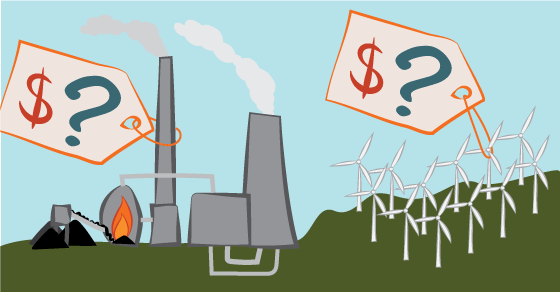
I quite enjoy reading the letters to the editor of our city’s newspaper. Sometimes, the opinions expressed are a corroboration of my own position, which makes me feel like I’ve got my finger on the pulse. Often, a writer brings an interesting perspective I hadn’t thought of, or a clever element of humour, or a sage piece of advice. Then there are others that wind me up, quoting misinformation from vested interests, thereby unwittingly or otherwise proliferating outdated facts or just plain untruths. Letters about climate change seem to be particularly littered with these myths. A couple of recent examples1 made a number of claims that sounded plausible so this article will be devoted to fact-checking a letter’s very bold claim – that “coal is cheaper by a mile”.
This used to be true – a decade or so ago. A Wikipedia page titled ‘Cost of electricity by source’2 contains a table of levelised costs3 showing coal at $28–38/MWh, wind at $63/MWh, solar thermal at $85/MWh and photovoltaics (ie rooftop-style solar PV panels) at $120/MWh. That table is dated 2006 – yes, 10 years old. Wikipedia even acknowledges that this information is old with a boxed note “This section is outdated” (Wikipedia’s bold).
So let’s update.
A 2013 study by Bloomberg New Energy Finance (BNEF) modelled the cost of generating electricity in Australia from different sources and showed that “electricity can be supplied from a new wind farm at a cost of $80/MWh, compared to $143/MWh from a new coal plant … including the cost of emissions under the Gillard government’s carbon pricing scheme. Even without a carbon price (the most efficient way to reduce economy-wide emissions) wind energy is 14% cheaper than new coal.”4
Beyond Zero Emissions’ summary of the BNEF study notes that “older coal-fired power plants from the 1970s and 80s still compete at lower prices than renewables — but only because their construction costs have depreciated. For the deployment of any new power generation in Australia, renewables now appear to be the way to go.”5 They also note that Australia’s big four banks consider new coal projects to be a financial risk.
The BNEF study expects the cost of coal to rise, especially if a carbon price is reintroduced, and that large-scale solar PV and thermal will become cheaper than coal by 2020 and 2030 respectively.
A 2014 CSIRO report projects similar relative figures of $74.5/MWh for black coal without a carbon price (or $96.5/MWh with a carbon price) and $58.4/MWh for wind in 2020.6
A report by the Electric Power Research Institute ranked supercritical pulverised coal7 cheapest at about $78/MWh followed by wind at about $105/MWh, integrated gasification combined cycle coal at about $125/MWh and large-scale solar PV at about $140/MWh in 20158, without a carbon price. Wind would be competitive with supercritical coal with a carbon price of about $30/tCO2-e. “All new low- and zero-emissions technologies are projected to reduce in cost by 2030” so that solar PV is comparable to coal and wind comes out cheapest.
A more recent BNEF study9 found that the global average cost for wind fell to $83/MWh in 2015 while coal increased to about $70/MWh in Asia–Pacific. When a carbon price is applied, wind is clearly cheaper in countries such as the UK ($85/MWh for wind vs $115/MWh for coal) and Germany ($80/MWh for wind vs $106/MWh for coal).
So while there is much variation in the crystal ball gazing, it is definitely no longer universally true that “coal is cheaper by a mile” and in many situations, not cheaper at all. All of the sources referenced in this article project that the cost of renewables will continue to fall whereas the cost of coal is more likely to increase. Bloomberg describe a “virtuous cycle” where as more renewables are installed, coal plants are used less causing the cost of coal-fired generation to go up, making renewables even more cost-effective so more renewables will be installed, bringing production costs of renewables down further.10 The various sources also project that this cycle happens faster when emissions reduction policies are in place, such as reduction targets, caps on pollution, carbon pricing.
And of course, there is just no argument about which power source produces the least CO2 – wind is lower by a mile!
1. Two very similar letters were published in The Canberra Times on 6 and 16 June 2016. This is not intended as a personal attack against the writers of the letters so I have not included their names, but “coal is cheaper by a mile” is a direct quote from the 16 June letter.
2. Wikipedia, Cost of electricity by source. Accessed 18 June 2016. https://en.wikipedia.org/wiki/Cost_of_electricity_by_source
3. The levelised cost of electricity (LCOE) captures the average cost of producing electricity from a technology over its entire life. It allows the comparison of technologies with very different cost profiles, such as solar photovoltaic systems (high upfront cost, but very low running costs) and gas-fired generators (moderate upfront cost, but significant ongoing fuel and operation costs). Graham P, 2015. Wind, solar, coal and gas to reach similar costs by 2030: report, The Conversation, 26 Nov 2015. https://theconversation.com/wind-solar-coal-and-gas-to-reach-similar-costs-by-2030-report-51306
4. Bloomberg New Energy Finance, Renewable energy now cheaper than new fossil fuels in Australia, 7 Feb 2013. http://about.bnef.com/press-releases/renewable-energy-now-cheaper-than-new-fossil-fuels-in-australia/
5. Beyond Zero Emissions, In Australia, wind power is already cheaper than fossil fuels, and solar is right behind. Accessed 18 Jun 2016. http://bze.org.au/media/newswire/australia-wind-power-already-cheaper-fossil-fuels-and-solar-right-behind-130211
6. Brinsmead TS, Hayward J & Graham P, 2014. Australian electricity market analysis report to 2020 and 2030: Final draft, CSIRO Report No. EP141067. http://arena.gov.au/files/2014/07/CSIRO-Electricity-market-analysis-for-IGEG.pdf
7. Most of Australia’s coal-fired generators are based on combustion of pulverised coal in boilers to generate superheated steam that drives turbines to generate electricity. Efficiency and emissions intensity (how much CO2 is produced) varies widely, depending on a large range of factors. Department of Resources, Energy and Tourism, 2010. A cleaner future for power stations: Interdepartmental task group discussion paper. http://industry.gov.au/Energy/Documents/sustainability-and-climate-change/DiscussionPaperCleanerFuturePowerStation.pdf
8. Electric Power Research Institute, 2015. Australian power generation technology report: Executive summary, CO2CRC, CSIRO, ARENA, Office of the Chief Economist, Anlec R&D. http://www.co2crc.com.au/wp-content/uploads/2016/04/LCOE_Executive_Summary.pdf
9. Bloomberg New Energy Finance, 2015. Wind and solar boost cost-competitiveness versus fossil fuels, 5 Oct 2015. http://about.bnef.com/press-releases/wind-solar-boost-cost-competitiveness-versus-fossil-fuels/
10. Randall T, 2015. Solar and wind just passed another big turning point, Bloomberg, 6 Oct 2015. http://www.bloomberg.com/news/articles/2015-10-06/solar-wind-reach-a-big-renewables-turning-point-bnef
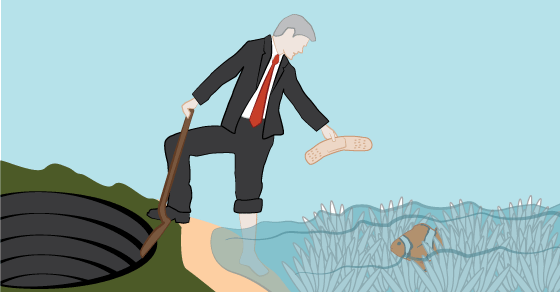
There has been an awful lot in the news and on social media in recent months about the state of the Great Barrier Reef. There are clearly an awful lot of people who care about it, but – let’s be honest here – maybe you just don’t. What’s it got to do with you? Sure, it’s big, got a lot of colourful fish and stuff, but really, it makes no difference to you whether it lives or dies, right? Or does it?
Let’s start by doing a quick fact check. The Great Barrier Reef (GBR) is the largest living organism on earth, stretching 2300 km along the coast of Queensland and can be seen from space. The GBR Marine Park covers 344 400 km2, bigger than Tasmania and Victoria combined. It is home to over 5000 species of coral, fish, dugongs, turtles, dolphins, whales, rays and other creatures. But maybe you’re just not interested in its World Heritage value and natural beauty.
Since the 1890s, the Reef has become a major tourist destination,1 now contributing over $5 billion to the Australian economy, employing 64 000 (full-time-equivalent) people.2 That’s a lot of families depending on the Reef for their livelihoods. What happens to them if the Reef continues to deteriorate and no longer attract visitors? The government has no plan to find them alternative jobs. Still, not your job at risk, is it?
Coral reefs protect coastlines from the damaging effects of wave action and tropical storms,3 helping to prevent shoreline erosion and damage to coastal infrastructure, that is, buildings, roads and other structures, saving on reconstruction costs. This natural barrier is keeping your home insurance premiums down.4 Starting to have some impact on your hip pocket?
The GBR is a massive ecosystem. One-third of all marine life spends at least part of its life cycle on a reef.5 This includes commercial species of fish that end up on our dinner plates. An ecosystem is as delicate and precariously balanced6 as a house of cards: take a couple of small species off the top and perhaps it won’t make much difference, but if you knock out too many supporting species from the bottom of the pyramid (the corals that offer food and shelter to so many other species), the whole structure is likely to collapse, taking with it the valuable food species, and you’re left with just the predatory survivors such as the crown-of-thorns starfish7 – not very appetising in your Christmas seafood buffet.
The Reef is of great cultural, spiritual, economic, social and physical value to Aboriginal and Torres Strait Islander peoples who can demonstrate thousands of years of connection to the Reef.8 Modern development and agricultural activities by European settlers (or invaders, but let’s not get into that here) have put great pressure on the resilience of the Reef. Is that another thing we ought to say sorry for?
Perhaps you still don’t see the relevance to you. Well, the GBR is the proverbial canary down the coal mine: if damage to the Reef is so clearly visible, we need to take it as a serious warning about the scale of the threat that climate change poses to all of us. Are the heat waves, heavy storms and extreme bushfires of recent years not enough to convince you that we need to take action? Then, surely, the potential loss of the world’s largest living organism should be. If it is deteriorating, then so too are other ecosystems that we depend on for food and water9 – and that will affect you and your family, even if you haven’t noticed that yet.
The health of the Reef is affected by many factors including sediment run-off and pollution from agricultural land and urban development, over-fishing, shipping and tourist traffic10, but the most significant threat is climate change: the water is becoming warmer and more acidic, evident particularly in the far north where other factors are not present. Even a single degree of temperature increase above normal maximum temperatures over several weeks such as occurred over summer 2015–16 can cause stress to corals, resulting in bleaching.11 Prolonged high temperatures can kill corals. None of these facts are in dispute. Despite some apparent controversy about the extent of current damage to the GBR,1213 no one disputes that there is damage or that the long-term outlook for the Reef from runaway climate change would be bleak. There is evidence from previous bleaching events that corals and their reef ecosystem can recover if conditions return to more favourable levels.14 But the trend in sea temperature over the past century has been relentlessly upward15 (see graph) and unless we, the human race, take serious and rapid action to halt climate change, it will be too late for coral reefs – they will simply be unable to tolerate the heat. If Sir David Attenborough says the Reef is “in grave danger”16, is there another kind?
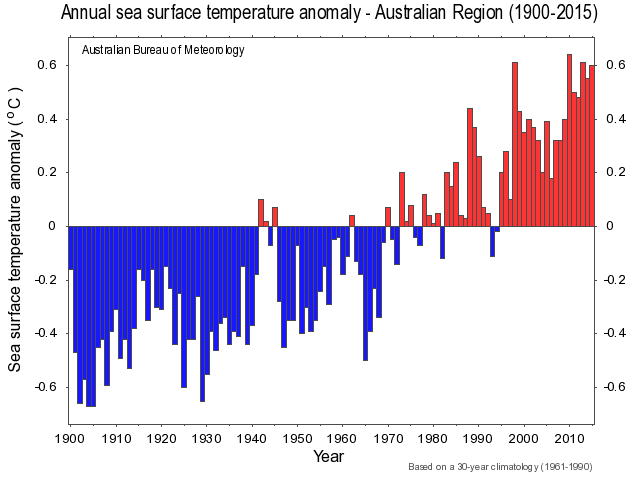
Sea surface temperature in the Australian region has risen fairly steadily over the past century. (Source: Bureau of Meteorology15)
Labor, Liberal and the Greens have all pledged funds to preserving the Great Barrier Reef. But as Bill Shorten rightly said on ABC TV’s Q&A on Monday 13 June17, “pledging money, that’s good, but if you’ve got climate change policies which do nothing about climate change, it’s just a billion dollar bandaid of neglect”. “The reef and … climate change … are inextricably linked.” “People somehow think that dealing with climate change is a debate between environmentalists and business: it’s not. Not dealing with climate change will have an impact on the bottom line of family budgets. Not dealing with climate change will have an impact on future generations who will have to do more to fix it up.”
So, now that you do give a $#@! about protecting the Reef, what can you do about it? Vote for a candidate who has policies to cease coal mining and coal-fired power generation because “opening the [Adani Carmichael] coalmine is incompatible with limiting global warming to 2°C, … goals considered necessary for the future of the reef.” (biologist Ove Hoegh-Guldberg, professor and director of the Global Change Institute, University of Queensland)18
That candidate is not Liberal–National party who have no intention of withdrawing support for coal mining. Nor is it Labor: despite Labor’s emissions targets and policies to transition away from the coal industry, Bill Shorten says “a Labor government is not going to ban coal mining in this country – coal is going to be part of the energy mix for the foreseeable future”. His concession is that “a government I form will not spend a dollar of taxpayer money on the [Adani Carmichael] mine. It has to stand up under it’s own commercial propositions and its own scientific and environmental propositions”.19
And to wrap up this discussion about the Reef and party policies, the Coalition claim on their website that “our work to protect the Great Barrier Reef resulted in the World Heritage Committee declaring last July that Australia was a global role model for the management of World Heritage properties”.20 That’s a mis-quote. What German Minister of State Maria Böhmer, Chairperson of the UNESCO World Heritage Committee, actually said to Australian Minister for the Environment Greg Hunt was “the Great Barrier Reef is a unique treasure which we must preserve for future generations. It is important that we have a sustainable, properly funded and long-term strategy. I have the impression that the international community expects Australia to be a role model for other countries. If Australia lives up to these expectations it will send an important signal” and “that it was now important to implement the measures which have been announced.”21 In May 2016 it was revealed that the Australian Government Department of the Environment requested that UNESCO and UNEP remove all reference to Australian World Heritage sites from the report World Heritage and Tourism in a Changing Climate because of concerns about the impact of the report on tourism.22 Do you smell a rat?
1 Australian Bureau of Statistics
2 Deloitte Access Economics, 2013. Economic contribution of the Great Barrier Reef.
3 Queensland Museum. Biodiscovery and the Great Barrier Reef, 5(a) Importance of coral reefs.
4 WWF. Coral reefs: importance.
5 Marshall J, 2016. In pictures: a close-up look at the Great Barrier Reef’s bleaching.
6 Great Barrier Reef. Great Barrier Reef food web.
7 Great Barrier Reef Marine Park Authority. Crown-of-thorns starfish.
8 Great Barrier Marine Park Authority. Heritage.
9 IPCC, 2014. Summary for policymakers. In: Climate Change 2014: Impacts, Adaptation, and Vulnerability. Part A: Global and Sectoral Aspects. Contribution of Working Group II to the Fifth Assessment Report of the Intergovernmental Panel on Climate Change, Field, C.B., V.R. Barros, D.J. Dokken, K.J. Mach, M.D. Mastrandrea, T.E. Bilir, M. Chatterjee, K.L. Ebi, Y.O. Estrada, R.C. Genova, B. Girma, E.S. Kissel, A.N. Levy, S. MacCracken, P.R. Mastrandrea, and L.L.White (eds.). Cambridge University Press, Cambridge, United Kingdom and New York, NY, USA.
10 Great Barrier Reef Marine Park Authority. Pressures facing coastal ecosystems.
11 Great Barrier Reef Marine Park Authority, 2015. Coral bleaching: fact sheet.
12 Lloyd G, 2016. Reef whistleblower censured by James Cook University, The Australian, 11 Jun 2016.
13 Cousins G, 2016. Are Australians really prepared to let the Great Barrier Reef die?, The Canberra Times, 10 Jun 2016.
14 Hoegh-Guldberg O and Ridgway T, 2016. Coral bleaching comes to the Great Barrier Reef as record-breaking global temperatures continue.
15 Bureau of Meteorology, 2016. Annual sea surface temperature anomaly – Australian region (1900–2015).
16 BBC, 2015. David Attenborough’s Great Barrier Reef, ABC TV 24 Apr 2016.
17 ABC, 2016. Q&A: Bill Shorten, 13 Jun 2016.
18 Taylor L, 2015. Australia on the spot over Adani mine and funding of Attenborough reef series, The Guardian, 10 December 2015.
19 ABC, 2016. Q&A: Bill Shorten, 13 Jun 2016.
20 Liberal Party, Issue 14: Protecting our environment.
21 Federal Foreign Office of Germany, 2015. Minister of State Böhmer meets Australia’s Environment Minister, 2 Feb 2015.
22 The Guardian, 2016. Australia scrubbed from UN climate change report after government intervention and The Union of Concerned Scientists World Heritage tourism sites climate change risks
23 ABC, 2016. Q&A: Bill Shorten, 13 Jun 2016.
Australian Government Department of Environment 2009. Australia’s biodiversity and climate change: the Great Barrier Reef and climate change.
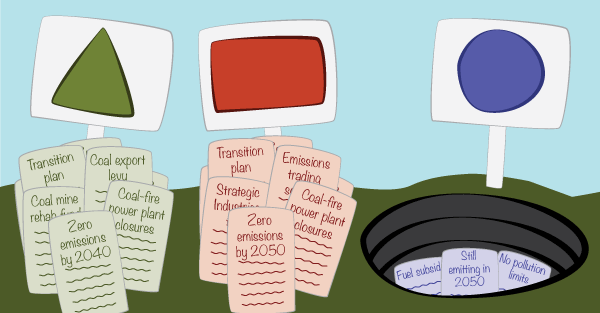
As I pulled together all the policies for the comparison between the Greens, Labor and Coalition ahead of the 2016 federal election, it pretty quickly became clear that there is a substantial difference between the Coalition policies and those of Labor and the Greens. Both Labor and the Greens have a range of policies around emissions reduction and transition from fossil fuels. The details and funding of these policies varies, of course, but what they collectively highlight is the glaring omission of anything similar in the Coalition's suite of policies.
The big black hole in the Coalition's policies is a clear indication of their addiction to coal. They have no plan and no intention to reduce Australia's use of coal or other fossil fuels. No plan to shut down or modernise coal-fired power plants. No plan to stop mining coal. No plan to reduce exports of coal. No plan to scale back the industry. No plan to transition mine, port or power plant workers and communities to other industries. No plan to reduce Australia's economic dependence on coal. No plan to cover the cost of decommissioning and rehabilitating abandoned coal mines.
In fact, quite the opposite. The Coalition doesn't mention the nearly $6.5 billion they will continue to give to the mining industry each year in the form of an exemption from paying the 39 cents per litre tax that the rest of us pay for vehicle fuel, because that will just quietly continue, itemised in table 3.1 of Statement 5 of the 2016 federal budget as 'Fuel tax credits scheme'.1 They don't mention that Environment Minister Greg Hunt approved (for the second time) the Indian-owned Adani Mining Company Carmichael Coal Mine in Queensland's Galilee Basin in October 2015, just weeks before the COP21 Paris climate talks. The Carmichael mine will be one of the largest coal mines in the world, and the mining and burning of coal from it will generate an estimated 4.7 billion tonnes of greenhouse gas emissions.2
What's the problem with this? Nothing, if you believe, as does Greg Evans, Executive Director of Coal, Minerals Council of Australia, that "this massive apparent environmental degradation ... is just a giant con job" against the Australian coal industry and that "all the pointers are strong for coal".3
However, according to Tim Buckley, Institute for Energy Economics and Financial Analysis, "the world export thermal coal markets are in structural decline. The price of our exports is down 60 per cent in the last five years. Demand for our product is declining. And the idea that Australia should be building new coal mines to supply a declining market really will just flood the market, push the price down further and bring about even more pain for an industry that's already beleaguered."3
So, if you, like 97 per cent of the world's scientists and a good proportion of non-coal-industry citizens of the world, accept that climate change is being caused by burning fossil fuels, then the Coalition's screaming lack of policies around fossil fuels is a huge problem. Even if you leave aside the need for Australia to reduce emissions as agreed at the COP21 Paris climate talks in November 2015, by handcuffing his policies to the fossil fuel industries, Malcolm Turnbull is sentencing this country to an economic black hole. What happens when the bottom does continue to fall out of the coal industry and coal prices continue to fall?4 What happens when China and India reduce and eventually stop importing our coal?5 Our coal industry workers, their families and communities will be jobless, left high and dry (or perhaps flooded by torrential climate-change-driven rain storms), the gaping mines left as environmental disaster zones by an unprepared Turnbull government, and our economy suffering the consequences of being coupled to a dying industry.
1 Australian Government, Budget paper no. 1: Budget strategy & outlook, Statement 5: Expenses and net capital investment, Table 3.1: Top 20 programmes by expenses in 2015–16. http://www.budget.gov.au/2015-16/content/bp1/html/bp1_bs5-01.htm
2 Environmental Law Australia, Carmichael Coal Mine Cases in the Land Court & Supreme Court of Qld. http://envlaw.com.au/carmichael-coal-mine-case/
3 Lateline, ABC TV, 3/6/2016, Emma Alberici hosts a debate with Tim Buckley, Institute for Energy Economics and Financial Analysis, and Greg Evans, Minerals Council of Australia, and poses the question: should Australia reduce coal exports to help preserve the environment? http://www.abc.net.au/lateline/content/2015/s4475588.htm
4 From Lateline debate, Tim Buckley says "the International Energy Agency clearly forecasts that coal's share of the electricity system globally is going to halve by 2040." http://www.abc.net.au/lateline/content/2015/s4475588.htm
5 The International Energy Agency Coal Medium-Term Market Report 2015 says "preliminary data indicate that a decline in Chinese coal demand occurred in 2014 and is set to accelerate in 2015" and "persistent oversupply and shrinking imports in China and elsewhere suggest prices will remain under pressure through 2020". http://www.iea.org/newsroomandevents/pressreleases/2015/december/global-coal-demand-stalls-after-more-than-a-decade-of-relentless-growth.html
If you have feedback, questions, suggestions, let us know.